Digital-Lifestyles is pleased to have Lawrence Dudley writing for us. All too often articles about the things teenagers are interested in are written by people old enough to be their parents. What teenagers are thinking isn’t represented. Lawrence will give you a point of view that you won’t find in other publications. You see Lawrence _is_ a teenager.
 Happy New Year!!Since the New Year has just begun, a piece focusing on last year, the one that has just begun and the developments suspected to emerge during it seemed justified.
Happy New Year!!Since the New Year has just begun, a piece focusing on last year, the one that has just begun and the developments suspected to emerge during it seemed justified.
It’s strange in many ways, to look back on a space of time as long as a year in tech history. Technology evolves so rapidly that a time span of even as little as a week can seem like a month.
2005 was hailed by many as ‘The Year Of HD’: More and more High Definition TVs and displays have become available, and the recently launched Xbox 360 supports HD out of the box. HD promises us richer colours, and most importantly a resolution higher than the abysmal 500×300 or so resolution offered by a lot of standard definition televisions.
The price of HD equipment also dropped by a huge amount. A year ago, I remember seeing prices that one just couldn’t justify for a TV, with £3,000 not being an unusual sum of money to see for a HD television.
Walking into UK Electronics retailer, Dixons, the other day, I came across a set that cost a ‘mere’ £1,000. While a thousand pounds is still a lot of money, it’s a much more realistic price for a television than the three grand of a year ago. As far as I am concerned then, the ‘Year of HD’ was certainly a raging success.
I know a lot of people in technology make all sorts of predictions, and a lot of them turn out to be false, but there is one prediction I am fairly confident in making: 2006 will be THE year of the home entertainment computer.
 You might wonder why I am so confident in this prediction: Afterall, Microsoft has been pushing out Windows Media Center for a good few years now, and they still haven’t gained dominance. The deciding factor for this year, I believe, will be the fact that Apple is now in the market.
You might wonder why I am so confident in this prediction: Afterall, Microsoft has been pushing out Windows Media Center for a good few years now, and they still haven’t gained dominance. The deciding factor for this year, I believe, will be the fact that Apple is now in the market.
On 12th October last year, Apple unveiled their first media-oriented computer, the iMac G5 which featured a remote control and accompanying software for watching DVDs, slideshows, playing music and movies. While the product’s reception was great, and the media loved it, nothing much has been heard of it since.
A nice gimmick, sure, but nothing more. It wasn’t about to replace the box under the TV, or indeed the TV itself because it missed one important feature: The ability to watch actual live television with it.
 There were of course enhancements that could be purchased which made this possible, but they are awkward and use a different remote control. Never mind having different remote controls for different boxes, this was a case of two remote controls for the same one, and I for one know how frustrating it is to lose a remote. Having two of them increases the chance of losing one. Apart from this it wasn’t a polished affair, and the software to facilitate a media centre-like experience wasn’t mature enough.
There were of course enhancements that could be purchased which made this possible, but they are awkward and use a different remote control. Never mind having different remote controls for different boxes, this was a case of two remote controls for the same one, and I for one know how frustrating it is to lose a remote. Having two of them increases the chance of losing one. Apart from this it wasn’t a polished affair, and the software to facilitate a media centre-like experience wasn’t mature enough.
What makes me think this will change? One word: Macworld in San Francisco next week. Apple are poised to do to video what they did to music, and I am confident they will pull it off with a rush of brushed aluminum and cool white plastic, accompanied with their usual style.
In the past, Apple haven’t briefed journalists in advance. There were of course all the usual rumour sites, and their fan base has always been prominent on the Web.
 However, this has always been on quite specific Mac-related Websites, and not in main stream media.
However, this has always been on quite specific Mac-related Websites, and not in main stream media.
Over the past few days however, the rumours have increased to such a level that popular news site Digg.com had almost one out of every two stories it carried relating to Apple in one way or another. I got a familiar buzz from this – something must be going on. Imagine my surprise then when I opened the newspaper this morning, only to find a nice big picture of Steve Jobs on the front cover of one of the inserts.
One thing’s for sure, San Francisco 2006 is going to be BIG. Along with a slew of expected Intel Apple Macs (yes, Apple are moving to the Intel architecture), a product is expected that, if released, could transform the way we consume media.
Think of it as an iPod for your living room. It downloads music, videos and films, can display and record television, radio and any other input source and can pipe audio to any room in the house, wirelessly, thanks to the existing Airtunes technology. Whether this is a dream that will soon become reality or not, will be revealed in the next few days.
It may of course be that Apple ship this wonder product later than this, but I have a feeling, only a feeling mind, that it will be at Macworld San Francisco.
So what about competitors? What are Microsoft doing about all this? It seems that Windows Vista will ship with a media center module built-in, meaning that it isn’t necessary to buy a separate Windows Media Center machine to run it on. However, not many details exist about this, and the release date isn’t certain yet, although it is scheduled for sometime in 2006.
There’s not much else to say until it becomes apparent what is released during the year, but I shall be doing a special piece covering the developments from Mac World San Francisco on or around the 12th of January. Here’s to a good year in media and technology!
 Interestingly, after Sky made a decision to use a non-Microsoft solution for its HD TV service in the UK, Bill Gates has revealed a deal has been done between BSkyB and Microsoft that will enable Sky’s UK subscribers to access a “Video on Demand” service using Microsoft Media Centre”.
Interestingly, after Sky made a decision to use a non-Microsoft solution for its HD TV service in the UK, Bill Gates has revealed a deal has been done between BSkyB and Microsoft that will enable Sky’s UK subscribers to access a “Video on Demand” service using Microsoft Media Centre”. Mr Gates, speaking in the keynote address at the Consumer Electronics Show (CES) in Las Vegas, evangelised the “arrival of the much-trailed ‘digital lifestyle’” (which of course, we here at Digital Lifestyles just loved when Bill started using it at last years CES).
Mr Gates, speaking in the keynote address at the Consumer Electronics Show (CES) in Las Vegas, evangelised the “arrival of the much-trailed ‘digital lifestyle’” (which of course, we here at Digital Lifestyles just loved when Bill started using it at last years CES). Palm have finally announced the launch of their much anticipated Windows Mobile powered Treo 700w smartphone.
Palm have finally announced the launch of their much anticipated Windows Mobile powered Treo 700w smartphone. The transition to Windows has, however, seen the TFT screen resolution shrink from Palm’s 320 x 320 pixels to a more miserly 240 x 240 pixels (the same as the Treo-alike HP iPAQ hw6500 series). Early reports suggest that the screen is somewhat washed out compared to the current Palm Treo 650.
The transition to Windows has, however, seen the TFT screen resolution shrink from Palm’s 320 x 320 pixels to a more miserly 240 x 240 pixels (the same as the Treo-alike HP iPAQ hw6500 series). Early reports suggest that the screen is somewhat washed out compared to the current Palm Treo 650.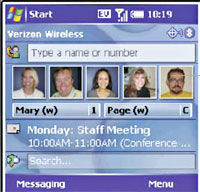 The removable battery gives up to 4.7 hours of talk time or up to 15 days of standby.
The removable battery gives up to 4.7 hours of talk time or up to 15 days of standby. If Palm have successfully managed the transition to the Windows platform, we can expect this new smartphone to be a winner, although we do wonder what long-term impact it may have on their Palm OS range.
If Palm have successfully managed the transition to the Windows platform, we can expect this new smartphone to be a winner, although we do wonder what long-term impact it may have on their Palm OS range. Happy New Year!!Since the New Year has just begun, a piece focusing on last year, the one that has just begun and the developments suspected to emerge during it seemed justified.
Happy New Year!!Since the New Year has just begun, a piece focusing on last year, the one that has just begun and the developments suspected to emerge during it seemed justified.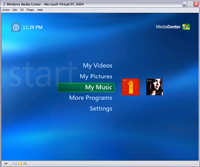 You might wonder why I am so confident in this prediction: Afterall, Microsoft has been pushing out
You might wonder why I am so confident in this prediction: Afterall, Microsoft has been pushing out  There were of course
There were of course  However, this has always been on quite specific Mac-related Websites, and not in main stream media.
However, this has always been on quite specific Mac-related Websites, and not in main stream media. With a fearful eye on Skype’s runaway success, Microsoft has joined the stampede to offer Internet-based telephony services by announcing a cut price, pre-paid PC-to-phone service, the result of a deal with the US telecommunications group, MCI.
With a fearful eye on Skype’s runaway success, Microsoft has joined the stampede to offer Internet-based telephony services by announcing a cut price, pre-paid PC-to-phone service, the result of a deal with the US telecommunications group, MCI. In recent months, Google, Yahoo! and eBay’s Skype unit have all chipped in with their own cheapo PC-to-phone VoIP (Voice over Internet Protocol) services.
In recent months, Google, Yahoo! and eBay’s Skype unit have all chipped in with their own cheapo PC-to-phone VoIP (Voice over Internet Protocol) services.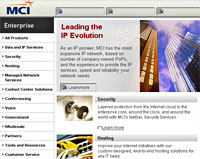 Similarly, Skype, the current big boys of the PC-to-PC VoIP market, are offering calls for about 2 cents a minute from a PC to a phone in the US other countries.
Similarly, Skype, the current big boys of the PC-to-PC VoIP market, are offering calls for about 2 cents a minute from a PC to a phone in the US other countries. The Next Revolution Is Here… Or Is It?
The Next Revolution Is Here… Or Is It?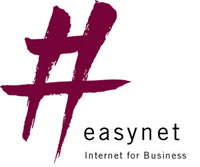 Yesterday, Sky’s takeover of Easynet was finalised and it looks to many that, despite paying a premium on the share price, they’ve have quite a bargain on their hands.
Yesterday, Sky’s takeover of Easynet was finalised and it looks to many that, despite paying a premium on the share price, they’ve have quite a bargain on their hands. Although reports that broadband is the latest media battleground have highlighted the moves by the UK telcos, the ultimate prize is the fabled home digital information gateway. The opportunities that this acquisition enables go beyond a mere triple play option (Inernet, TV & Telephone), allowing Sky to, begin by become the overriding aggregator of TV content and, in time, become the preferred digital gatekeeper for many UK homes.
Although reports that broadband is the latest media battleground have highlighted the moves by the UK telcos, the ultimate prize is the fabled home digital information gateway. The opportunities that this acquisition enables go beyond a mere triple play option (Inernet, TV & Telephone), allowing Sky to, begin by become the overriding aggregator of TV content and, in time, become the preferred digital gatekeeper for many UK homes. Oooh, Conspiracies Abound
Oooh, Conspiracies Abound From December 1, all iTunes downloads will carry a new kind of Fair Play DRM, a direct negative feedback ‘watermark’ recognized by Fair Play earbuds and, ultimately, by other audio devices from manufacturers who sign up for the code, which was created under a joint SunnComm and Macrovision venture.
From December 1, all iTunes downloads will carry a new kind of Fair Play DRM, a direct negative feedback ‘watermark’ recognized by Fair Play earbuds and, ultimately, by other audio devices from manufacturers who sign up for the code, which was created under a joint SunnComm and Macrovision venture. Nestled down low in the small print of an advert for some HP servers which run unix/Windows and Linux, the following text can be found
Nestled down low in the small print of an advert for some HP servers which run unix/Windows and Linux, the following text can be found Quite who originally spotted this blunder in the small print, isn’t known, but we suspect that it’s someone with a very keen eye for detail – verging on the fanatical.
Quite who originally spotted this blunder in the small print, isn’t known, but we suspect that it’s someone with a very keen eye for detail – verging on the fanatical.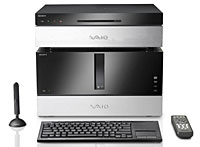 Sony are keen for us to ‘redefine’ our living rooms with the release of their new VAIO XL1 Digital Living System, a twin box offering combining a high-end multimedia PC with a 200-disc media changer/recorder.
Sony are keen for us to ‘redefine’ our living rooms with the release of their new VAIO XL1 Digital Living System, a twin box offering combining a high-end multimedia PC with a 200-disc media changer/recorder. A similar process takes place for movies, where an in-depth synopsis and star, cast, director and producer details etc are automatically downloaded and made accessible onscreen through the included wireless keyboard or remote control.
A similar process takes place for movies, where an in-depth synopsis and star, cast, director and producer details etc are automatically downloaded and made accessible onscreen through the included wireless keyboard or remote control. There’s no denying that the recording functionality seems mighty impressive to us, with the XL1 able to automatically and sequentially record up to 200 audio CDs from the media changer to the hard drive.
There’s no denying that the recording functionality seems mighty impressive to us, with the XL1 able to automatically and sequentially record up to 200 audio CDs from the media changer to the hard drive. To ensure that your late night listening pleasure isn’t spoilt by the sound of a mass of Boeing 747-like fans starting up, the XL1 system uses liquid-cooled components for quiet operation.
To ensure that your late night listening pleasure isn’t spoilt by the sound of a mass of Boeing 747-like fans starting up, the XL1 system uses liquid-cooled components for quiet operation. Leo Kuvayev, the leader of the largest Spam gang, and six of his business partners have been handed a $37m (~E30m, ~£21m) fine by the courts in Massachusetts.
Leo Kuvayev, the leader of the largest Spam gang, and six of his business partners have been handed a $37m (~E30m, ~£21m) fine by the courts in Massachusetts. This was no small operation. Microsoft collected more than 45,000 spam messages believed to be from the Internet Spam Gang in just 22 days between 12 June and 4 July 2004. Not bad, with an average of 2,000 emails per day.
This was no small operation. Microsoft collected more than 45,000 spam messages believed to be from the Internet Spam Gang in just 22 days between 12 June and 4 July 2004. Not bad, with an average of 2,000 emails per day. He appears very enterprising, does’t he? He’s also listed as the 2nd worst spammer on the
He appears very enterprising, does’t he? He’s also listed as the 2nd worst spammer on the